Shanghai Museum's bronze artifacts dazzle in SZ
As one of the most important historical and cultural heritages of China, ancient bronze wares are widely admired for their diverse types, unique shapes, magnificent patterns, rich inscriptions and complex casting techniques. Bronze wares were not only used in sacrificial and ceremonial activities, but also were a part of banquets, wars and daily lives.
Now visitors can admire 172 exquisite bronze wares on loan from the Shanghai Museum at a new exhibition at the Shenzhen Museum’s Ancient Art Division. The bronze artifacts are mainly from the Xia (2070-1600 B.C.), Shang (1600-1046 B.C.) and Zhou (1046-256 B.C.) dynasties.
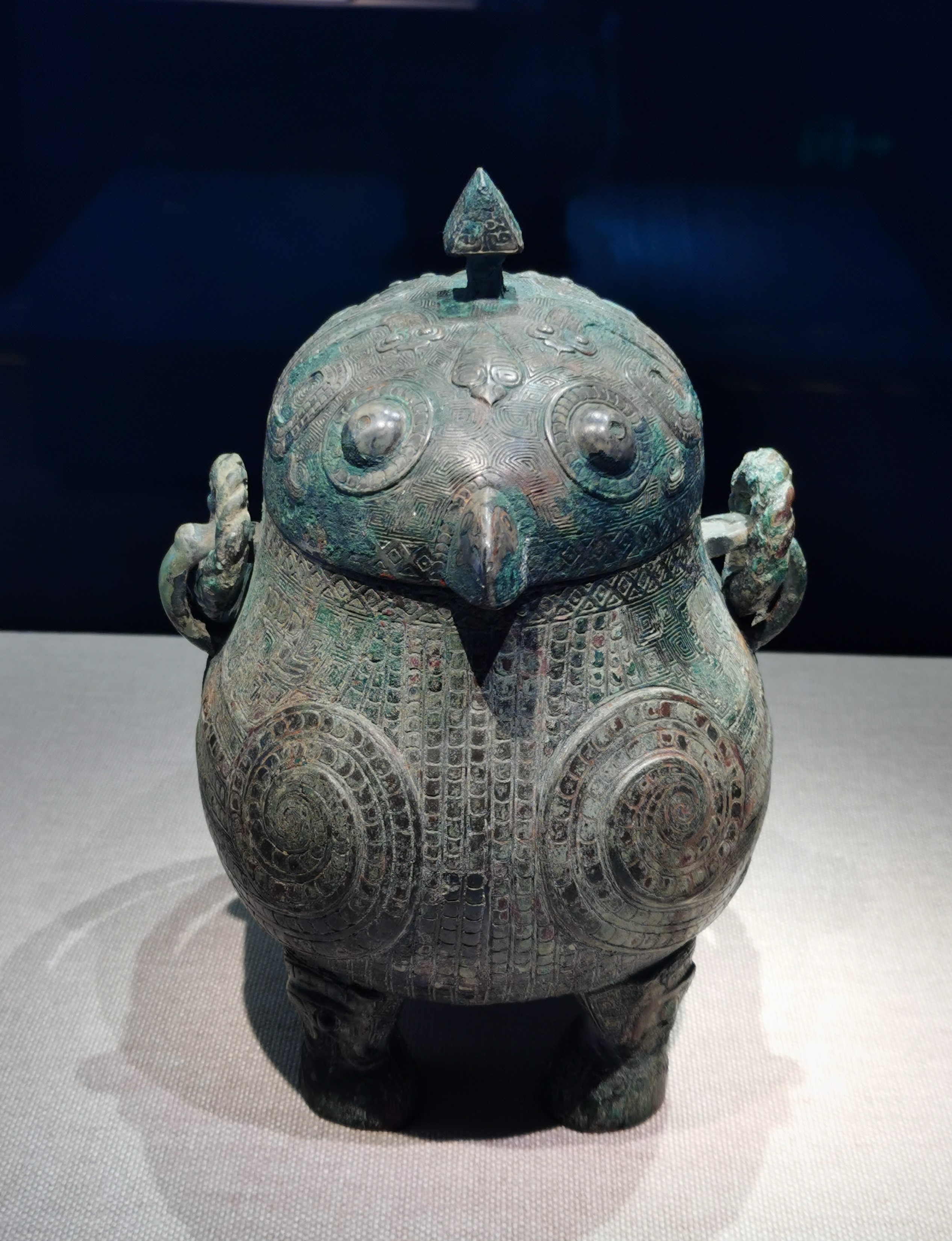
An owl-shaped you (wine vessel) from the late Shang Dynasty is on display at the Shenzhen Museum’s Ancient Art Division. Photos by Cao Zhen
During the Xia Dynasty, bronze wares were cast in regular and simple shapes and only a few pieces were engraved with geometric patterns such as strings and beads, and bronze wares used in sets began to carry the ritual function.
In the Shang Dynasty, the shapes, patterns and casting techniques underwent great development, reaching the first peak in the Bronze Age in China. The variety of vessels increased and wine vessels were basically used in sacrificial rituals. Patterns of beast faces, dragons and birds, sophisticated compositions and simple inscriptions appeared on bronze wares.
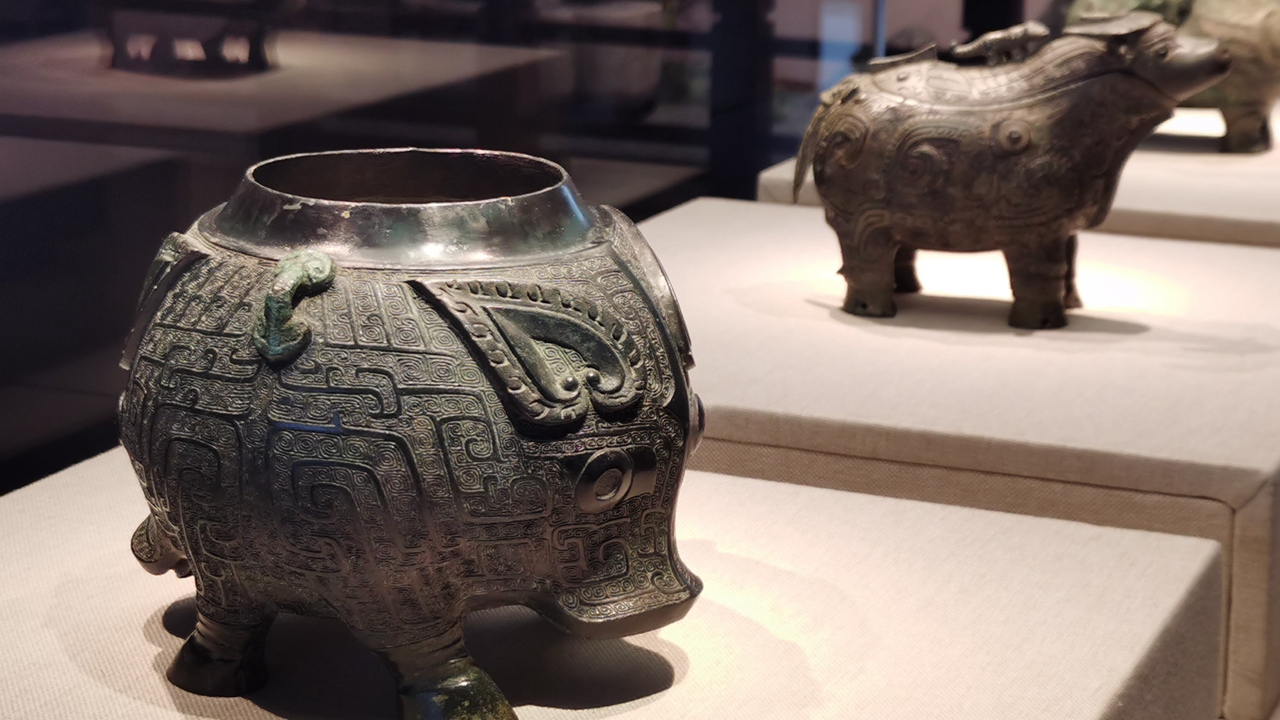
A boar-shaped you (wine vessel) and an ox-shaped gong (wine vessel) with phoenix design from the late Shang Dynasty (1600-1046 B.C.).
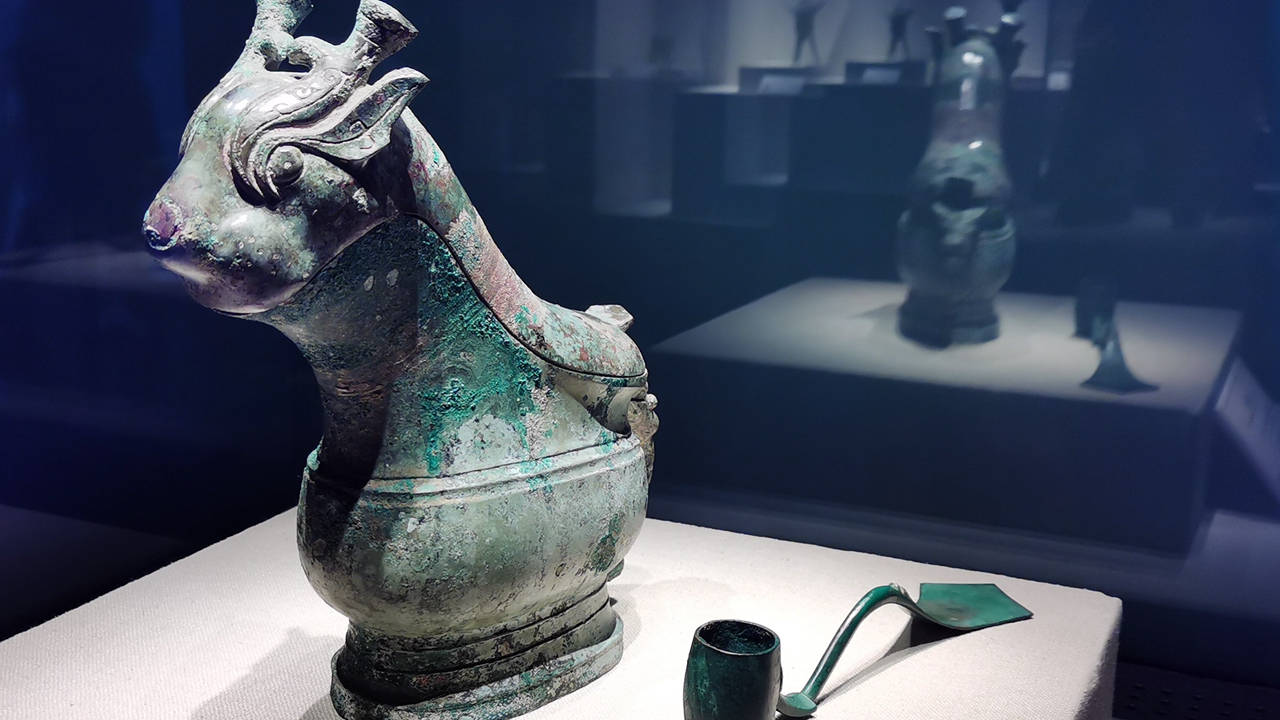
A gong (wine vessel) from the early Western Zhou Dynasty (1046-771 B.C.).
In the Zhou Dynasty, food vessels increasingly dominated ritual ceremonies while wine vessels declined. Beast-face patterns were replaced by abstract designs such as wave, double-ring, curve and hook patterns. The practice of inscriptions on the vessels became common, especially long narrative inscriptions.
Later in the dynasty, the country was in a state of division, resulting in various styles of bronze wares that created the second peak of China’s Bronze Age. Vessels’ ritual functions gradually weakened while the practicality of the objects was emphasized, resulting in many new and exquisite styles. Dragon patterns became intricate and daily life scenes began to emerge on bronze patterns.
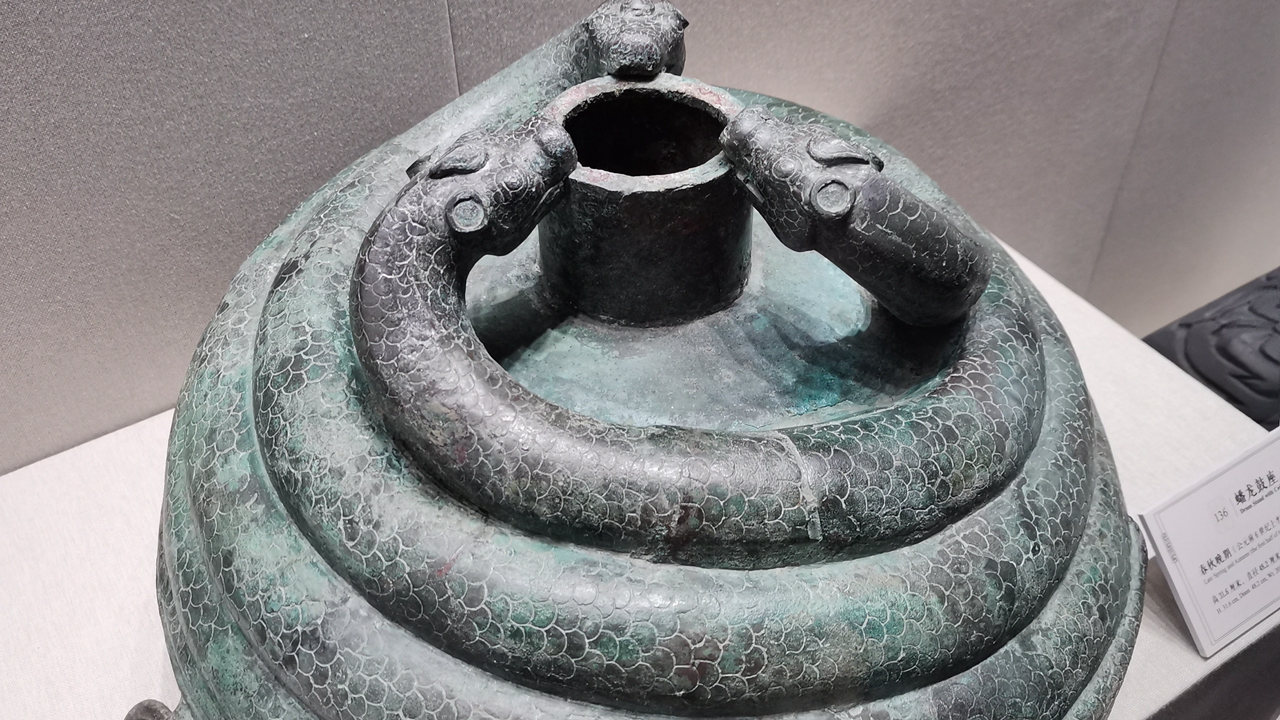
A drum stand with a coiled-dragon design from the late Spring and Autumn Period (770-476 B.C.).
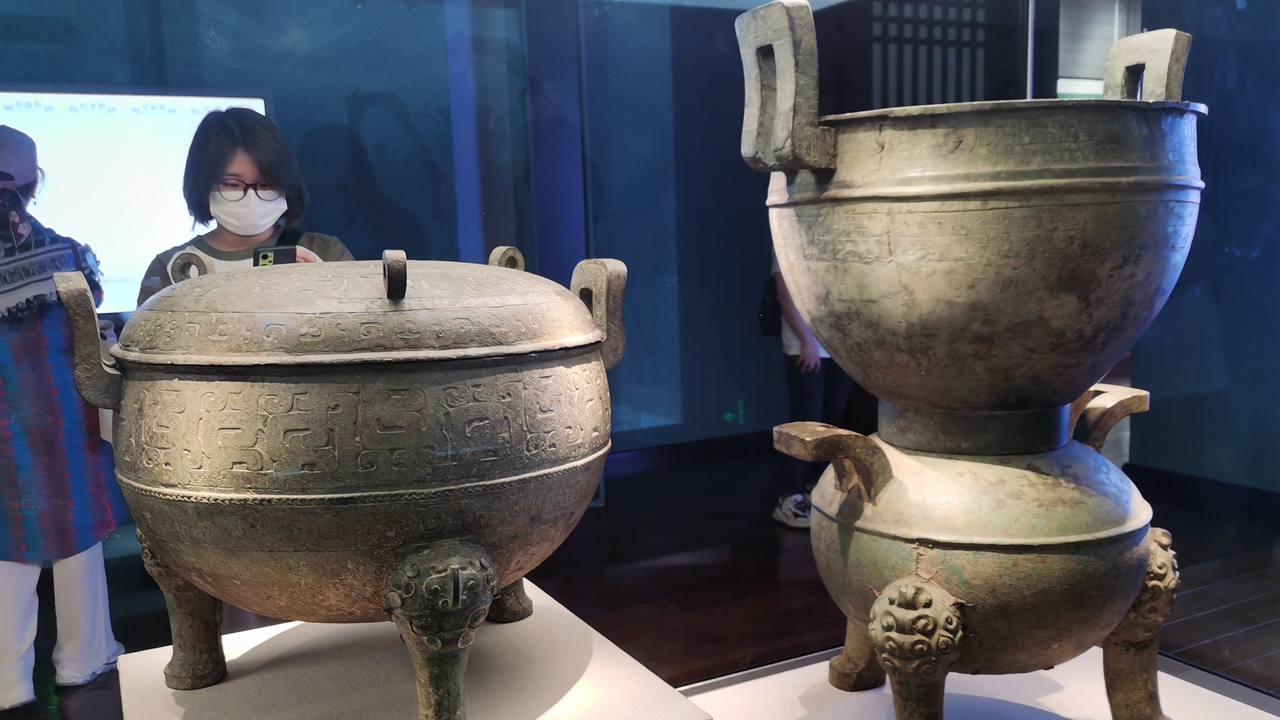
A visitor observes a ding (food vessel) with a coiled-dragon pattern and a yan (steamer) from the Warring States Period (476-221 B.C.).
At the exhibition, visitors not only can admire a large variety of bronze wares crafted for aristocrats in different rankings based on the strict ritual and music systems that influenced ancient Chinese society, but also can sense the beauty of bronze artifacts used in daily life after the ritual system collapsed.
The exhibition’s title “Bells and Vessels Engrave a Prosperous Era” summarizes the brilliant achievements of ancient Chinese bronze civilization. Observing the artifacts, one can see the immortality of Chinese bronze art across its centuries-old evolution which has historic, scientific and artistic values.
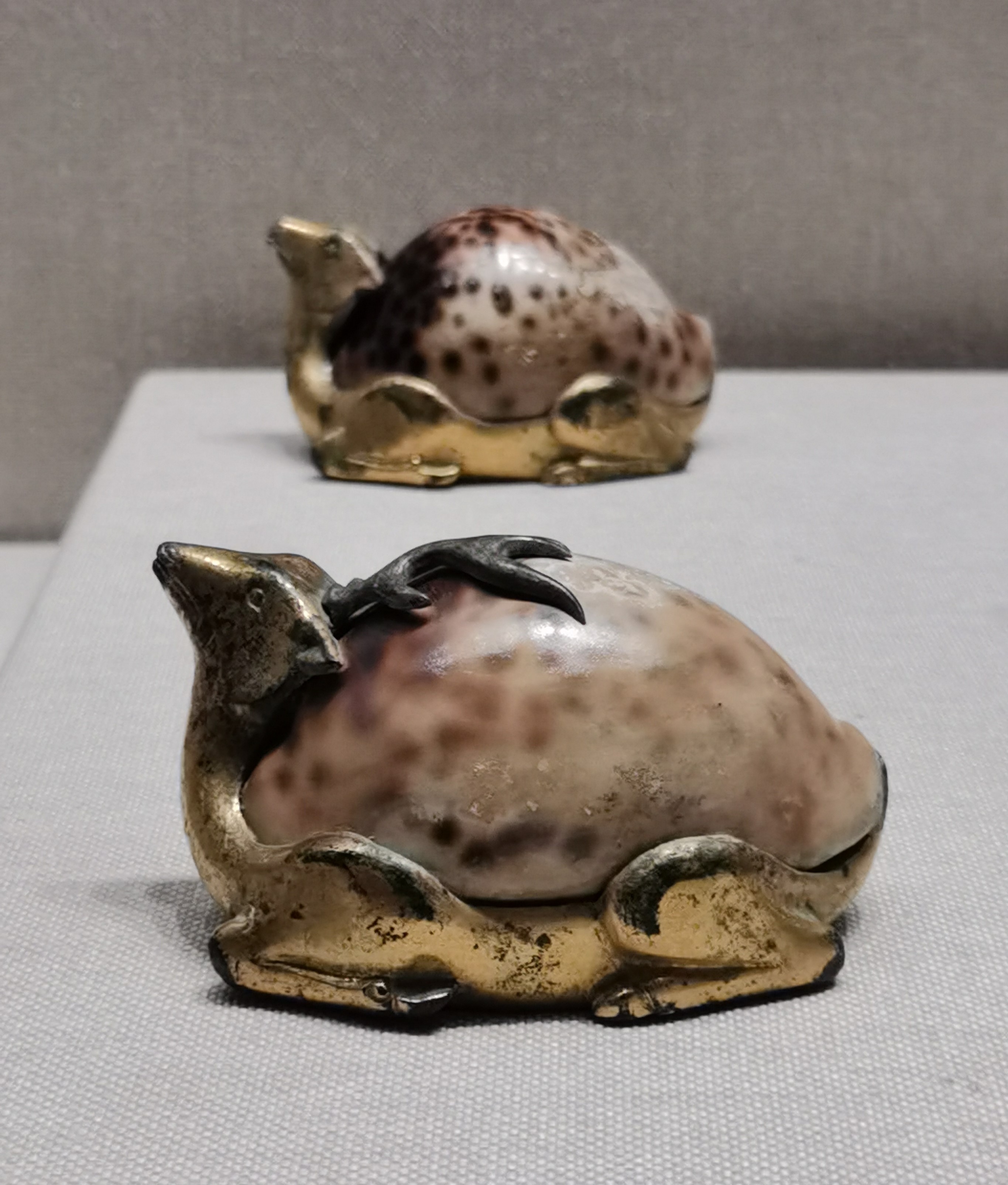
Deer-shaped weights from the Western Han Dynasty (202 B.C.-A.D. 8).
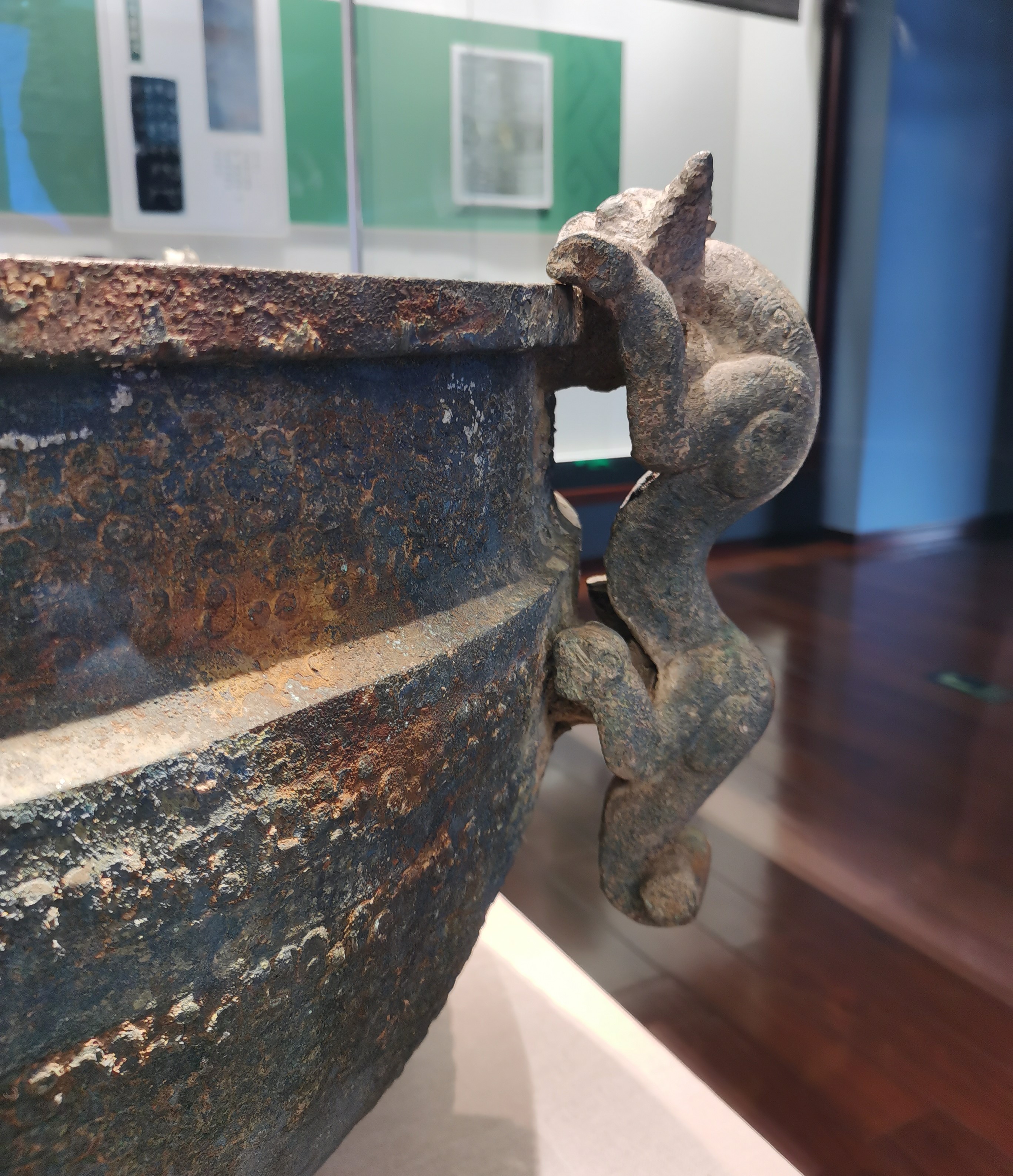
A tiger decoration claws on the edge of the King Fuchai of Wu Bronze Jian (water vessel) from the late Spring and Autumn Period (770-476 B.C.).
Dates: Until Aug. 27
Booking: WeChat account “iszbwg”
Venue: Shenzhen Museum’s Ancient Art Division, Futian District (深圳博物馆古代艺术馆)
Metro: Line 9 to Hongling South Station (红岭南站), Exit A